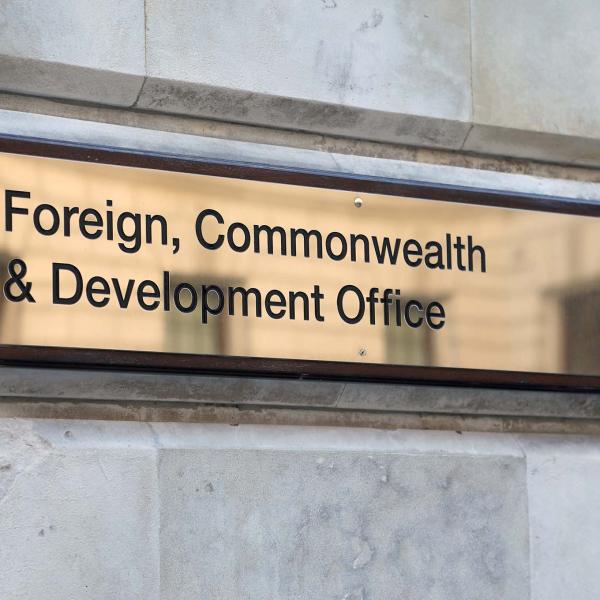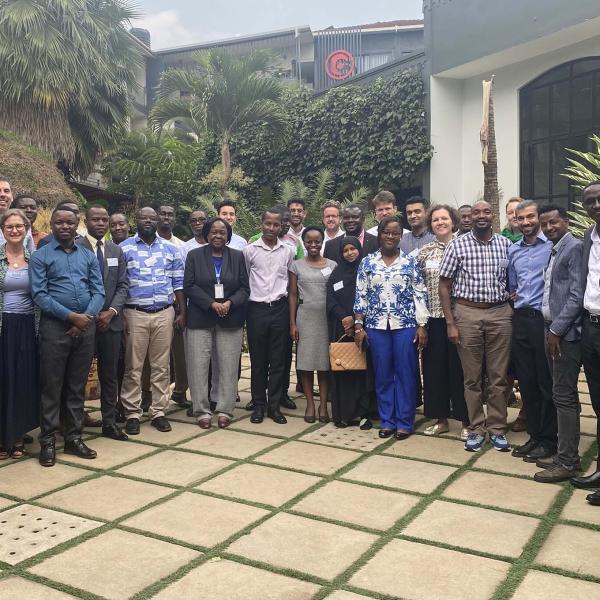Arthur Baker is a Research Assistant and Ian Mitchell is Deputy Director and Senior Policy Fellow at the Center for Global Development in Europe.
In a speech on Tuesday 9th October, the Secretary of State for International Development, Penny Mordaunt, touched upon a number of important issues taking centre stage in current debates on UK aid spending, including Brexit and the role of private sector investment. These two substantive issues are interesting within the context of broader developments in UK aid spending in recent years. A new report by researchers from the IFS and the Center for Global Development (CGD) analyses how UK aid is spent and the potential drivers of these changes.
Five years of meeting the aid target
Since 2013, the UK has met its target to spend at least 0.7% of gross national income (GNI) on official development assistance (ODA) (see Figure). The target was enshrined into UK law in 2015[1] and there is currently a cross-party political consensus to maintain it.
Figure: Historical UK ODA Spending
Meeting this target sets the UK apart in an international context. While all thirty members of the OECD’s Development Assistance Committee (DAC), except the US and Switzerland, have endorsed the 0.7% commitment, only five – the UK, Denmark, Luxembourg, Norway, and Sweden – actually met it in 2017. That the UK is one of the few countries to meet the target is particularly notable in the context of the recent period of austerity. Even so, ODA spending remains a relatively small part of government spending, accounting for 1.7% of the total in 2017, though it has grown quickly and is nearly double the 2008 figure of 0.9%.
An updated strategy for UK aid
UK ODA is administered with the goal of promoting ‘the economic development and welfare of developing countries’,[2] and supports efforts to achieve development milestones such as the Global Goals. But in the context of the UK’s commitment to aid spending, the government has sought to update its strategic objectives for ODA. Its 2015 aid strategy aims to align more closely the benefits of aid spending in developing countries with the UK’s national interest. It sets out four key objectives for UK aid: promoting global prosperity; strengthening security; responding to crises; and tackling extreme poverty. The strategy also outlines a cross-government approach for achieving these objectives. As our research shows, this is having an impact on how and where UK aid is spent.
Perhaps the most obvious consequence of the 2015 aid strategy is a marked shift towards spending more ODA through branches of government other than the Department for International Development (DfID). While DfID’s total budget was much bigger in 2017 than it was five years earlier, it accounted for a much smaller share of the UK’s aid spending (73%, relative to 87% in 2012), as all of the increase in aid spending since 2013 has occurred through departments other than DfID. A focus on cross-governmental involvement in ODA presents opportunities for a wider range of expertise to be leveraged in the delivery of aid. But it also makes it more important that other government departments build strong processes for developing, managing and reporting on their aid programmes effectively and transparently.
Shifts in strategic focus and a more dispersed profile of spending across government are also having an impact on which countries and projects receive UK aid. Bilateral aid – targeting a specific country, region or type of project – makes up the majority of UK ODA. In 2015 and 2016 aid going to humanitarian programmes, which provide assistance during and in the aftermath of emergencies, constituted the largest proportion of bilateral aid of any thematic spending area. Much of this can be attributed to responses to the crisis in Syria, and to support to Jordan, Lebanon and Turkey, which have taken in many Syrian refugees. This reflects the government’s focus on responding to crises and enhancing security and stability abroad, including a target to spend 50% of DfID’s budget in fragile and conflict-afflicted states and regions.
There has also been an increased emphasis on the role of UK public investment in private enterprise in the pursuit of development objectives, in particular through CDC Plc (formerly the Commonwealth Development Corporation). This is a public corporation, solely owned by DfID, whose primary role is to provide investment in private enterprise in developing countries. It usually offers these investments in riskier markets which can be under-served by private capital. As a public corporation, any capital support provided to CDC by DfID doesn’t add to the headline measure of the deficit – and when the money is loaned out, the government receives an asset (usually in the form of equity) in return, so the deficit is still unaffected. DfID refers to the class of spending that does not add to public borrowing as ‘non-fiscal’, and the Treasury has set DfID a target for ‘non-fiscal’ spending of £5 billion between 2016-17 and 2019-20.[3]
In 2017, the Government raised the cumulative level of financial support that DfID is able to provide to CDC, and DfID published a business case for investing capital of up to £3.5 billion in CDC over the period 2017-2022. Most recently, the Secretary of State reiterated the importance of the role of CDC in the UK aid landscape in her speech on October 9th. While there may be very good reasons to invest in the private sector in developing countries, it is important that the fact that it is scored favourably against the headline measure of borrowing does not become a primary driver for selection of aid projects.
Uncertainty over Brexit
Going forward, these new patterns and the strategic decisions underlying them might be affected by the UK’s departure from the EU. Already, the Prime Minister and the Secretary of State have outlined their vision for aid spending to help cement a ‘global Britain’s’ place in the world.
But Brexit could influence not just the UK’s priorities for its aid budget, but also the channels through which the money is spent. In 2016, £1.5 billion of UK aid spending – more than 10% of the total ODA budget – was channelled through the EU.
While the UK has stated that it wishes to maintain close collaboration with the EU on aid after Brexit, the government has specified two conditions that must be met for this to happen: oversight and influence over EU development activities, and equal access for British organisations in delivering EU-funded aid programmes. Currently, most of the EU’s development instruments either do not allow participation by non-members or restrict their ability to influence decision-making – contravening this UK ‘red line’. Without a deal on the UK’s future role in EU aid programming, much of this £1.5 billion contribution would come back to the UK. But if it is to continue to meet its commitment to spending 0.7% of national income on ODA, the government will need to find the most effective way to spend this money on overseas development.
Looking ahead
There have been big increases in UK overseas aid spending in recent years, with spending in 2017 more than four times its level two decades ago. Since the UK first met its spending target in 2013, the 2015 aid strategy has shaped the flows of UK aid, affecting both which departments spend ODA and which countries receive it. However, with considerable uncertainty about the UK’s future aid relationship with the EU, continuing pressure on the public finances, and greater emphasis on new strategic priorities, a number of significant questions remain for next year’s Spending Review.
This observation is based on a pre-released chapter from the IFS Green Budget which will be published on October 16th. The Green Budget is being produced in association with the ICAEW and Citi and is funded by the Nuffield Foundation.
[1] International Development (Official Development Assistance Target) Act 2015, http://www.legislation.gov.uk/ukpga/2015/12/pdfs/ukpga_20150012_en.pdf.
[2] http://www.oecd.org/dac/stats/officialdevelopmentassistancedefinitionandcoverage.htm
[3] International Development Committee’s Allocation of Resources Inquiry, `Memorandum by DfID’, p. 6. http://data.parliament.uk/writtenevidence/committeeevidence.svc/evidencedocument/international-development-committee/dfids-allocation-of-resources/written/28276.pdf











